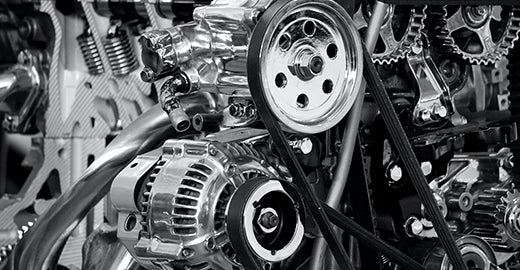Unlocking the Power of E-bike Gearing Systems: A Comprehensive Guide

Mastering Your Ebike's Gearing System: A Comprehensive Guide
Electric bicycles (ebikes) have revolutionized the way we experience cycling, and at the heart of this transformation is the gearing system. Understanding the nuances of ebike gears is essential for optimizing your ride, ensuring a seamless and enjoyable journey across various terrains. In this comprehensive guide, we delve into the diverse world of ebike gearing systems, shedding light on their types, functionalities, and maintenance tips.
Exploring Ebike Gear Systems
1. Derailleur Gear Systems: Adaptable and Efficient
Most ebikes are equipped with derailleur gear systems, situated externally at the center of the rear wheel. Controlled by a cable, the rear derailleur orchestrates the movement of the bike chain across different-sized gears, providing a spectrum of assist levels.
Larger gears (lower gears) are ideal for uphill climbs, offering substantial assistance.
Smaller gears (higher gears) are suited for flat surfaces and downhill rides, reducing resistance and enhancing speed.
Derailleur gear systems are lightweight, cost-effective to repair, and offer versatility for a range of riding scenarios. However, their exposure to external elements makes them susceptible to dust and grime, potentially leading to less smooth shifting.
2. Hub Gear Systems: Silent and Low-Maintenance
Hub gear systems (IGH) serve as an alternative, concealing their gear mechanism within the hub of the rear wheel. In contrast to derailleur systems, hub gears operate without a chain, featuring a set of gears inside the hub.
Hub gears are low-maintenance, as their enclosed structure reduces exposure to external elements, prolonging their lifespan.
While slightly heavier and more expensive, hub gears are known for their durability, making them compatible with belt drive ebikes.
Despite their advantages, hub gear systems often have a narrower gear range compared to derailleur systems, and repairs may require professional expertise.
3. Single-Speed Gear Systems: Simplicity at Its Best
For riders seeking simplicity and ease of use, single-speed gear systems provide an ideal solution. With only one mechanical gear, these systems are well-suited for flat terrain cycling.
Single-speed bikes require minimal maintenance and are user-friendly, making them practical for beginners or those desiring a relaxed riding experience.
Mastering Gear Shifting on Your Ebike
Understanding how to shift gears correctly is crucial for maintaining a healthy gear system. Here are some essential tips:
Shift While in Motion: Never shift gears when stationary. Ensure you are pedaling while shifting, avoiding damage to the gears. Shifting before coming to a stop also facilitates easier restarting.
Pedal Carefully While Shifting: Avoid high-speed pedaling when shifting gears to prevent chain slippage. Familiarize yourself with the shifting mechanism before riding.
Shift One Gear at a Time: To prevent potential damage, shift gears gradually. Aggressive gear changes can lead to chain skipping or derailment.
Adapt Gears to Terrain: Understand which gears are suitable for different terrains:
Lower gears are effective for uphill climbs.
Middle gears are suitable for everyday cruising and slightly undulating terrains.
Higher gears are ideal for acceleration, downhill rides, and flat surfaces.
Maintaining Your Ebike Gearing System
Ensuring a well-functioning gear system is vital for a smooth and enjoyable ride. Follow these maintenance tips:
Clean and Lubricate Gears: Regularly clean the drivetrain, including gears, using a mild detergent and a lint-free cloth. Lubricate the bike chain monthly to reduce the risk of rust.
Adjust Gears: After riding approximately 1000 kilometers, have a professional inspect and adjust the drivetrain as needed.
Replace Worn or Damaged Gears: Gears experience wear and tear over time. Promptly replace damaged gears to ensure optimal gear system performance. Consider replacement every 1000 miles of riding.
Frequently Asked Questions
Ideal Gear Ratio for an Ebike: A gear ratio of around 300% is considered average and suitable for various terrains. Gear ratio represents the difference between the lowest and highest gears, usually expressed as a percentage.
Purpose of Ebike Gears: Ebike gears assist cyclists in adapting to different terrains and riding styles. Higher gears are beneficial for descents and flat surface riding, while lower gears are preferable for uphill climbs.
Conclusion
Mastering the intricacies of your ebike's gearing system opens the door to a world of enhanced riding experiences. Whether you're navigating urban streets or conquering mountain trails, the right gear at the right time ensures a seamless and enjoyable journey. Choose the gearing system that aligns with your preferences, and let MET Riders elevate your ebike adventure to new heights.
